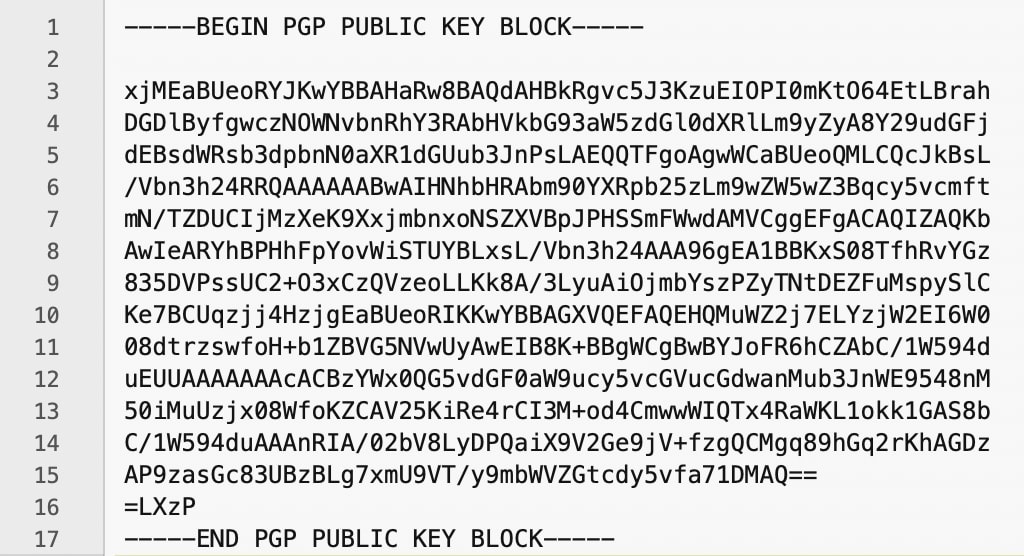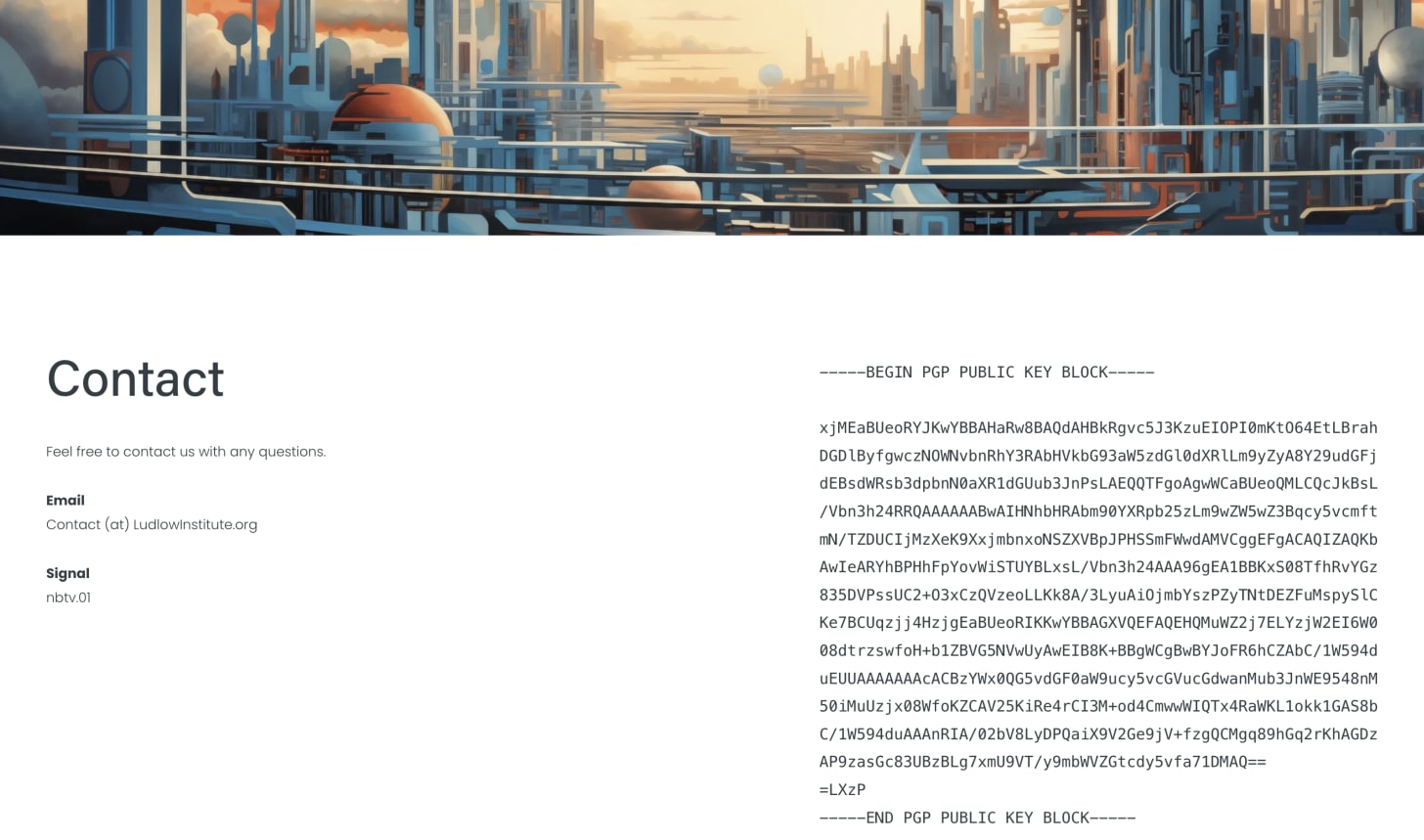I’ve been reading The Idea Factory by Jon Gertner, and it’s fascinating. It tells the story of Bell Labs, the research arm of AT&T, and a singular moment in history when a small community of scientists and engineers played a huge role in inventing much of the modern world. From the transistor to information theory, from lasers to satellites, a staggering number of breakthroughs can trace their origins from this one place.
The book asks: what made this possible?
It wasn’t luck. It was a deliberate design. Bell Labs proved that invention could be engineered: You can create the right environment to deliberately make breakthroughs more likely. With the right structure, culture, and incentives, it’s possible to give technological progress its best possible chance.
And this got me thinking: what’s the most effective way to move privacy and decentralized tech forward? Perhaps the internet itself taken on the role Bell Labs once played, and become the shared space where ideas collide, disciplines mix, and breakthroughs emerge? If so, how do we best harness this potential?
A factory for ideas
After World War II, Mervin Kelly, Bell Labs’ president, asked a radical question: could invention itself be systematized? Instead of waiting for breakthroughs, could he design an environment that produced them more reliably?
He thought the answer was yes, and reorganized Bell Labs accordingly. Metallurgists worked alongside chemists, physicists with mathematicians, engineers with theorists. Kelly believed the greatest advances happened at the intersections of fields.
There were practical reasons for cross-disciplinary teams too. When you put a theorist beside an experimentalist or engineer, hidden constraints surface early, vague ideas become testable designs, bad ideas die faster, and good ones escape notebooks and turn into working devices.
Bell Labs organized its work into a three-stage pipeline for innovation:
- Basic research: scientists exploring fundamental questions in physics, chemistry, and mathematics. This was the source of radical, sometimes “impractical” ideas that might not have an immediate use but expanded the frontier of knowledge.
- Applied research: engineers and theorists who asked which discoveries could actually be applied to communication technology. Their role was to translate abstract science into potential uses for AT&T’s vast network.
- Development and systems engineering: practical engineering teams who built the devices, refined the systems, and integrated them into the company’s infrastructure so they could work at scale in the real world.
This pipeline meant that raw science didn’t just stay theoretical. It became transistors in radios, satellites in orbit, and digital switching systems that powered the modern telephone network.
Bell Labs’ building architecture was designed to spark invention as well. At the Murray Hill campus, famously long corridors linked departments to trigger chance encounters. A physicist might eat lunch with a metallurgist. A chemist might bump into an engineer puzzling over a problem. And there was a cultural rule: if a colleague came to your door for help, you didn’t turn them away.
Causation is hard to prove, but the lab’s track record in the years that followed was remarkable:
- The transistor (1947): John Bardeen, Walter Brattain, and William Shockley replaced bulky vacuum tubes and launched the electronics age.
- Information theory (1948): Claude Shannon created the mathematics of communication, the foundation of everything from the internet to data encryption.
- And much more: semiconductor and silicon device advances; laser theory and early lasers (including a 1960 continuous-wave gas laser); the first practical silicon solar cell (1954); major contributions to digital signal processing and digital switching; Telstar satellite communications (1962). The list goes on.
The Secret Sauce… it’s not what you think
Some people may argue that Bell Labs succeeded for other reasons. They point to government protection, a regulated market, defense contracts, and deep pockets. Those things were real, but they are not a sufficient explanation. Plenty of money is poured into research that goes nowhere. And protected monopolies often stagnate, because protection reduces the incentive to improve.
What Bell Labs’ resources did buy was proximity. Kelly’s goal was to gather great talent under one roof, and strategically try to increase the chances they would interact and work together. He built a serendipity machine.
The real lesson to take away from Bell Labs isn’t about money. It’s about collaboration and chance encounters.
By seating different disciplines side by side, they could connect, collaborate, and share insights directly. Building on one another’s ideas and sparking new ones led to a staggering array of advances at Bell Labs in the post-war decade.
Now in Kelly’s day, the best ways to give cross-pollination a real chance was to get people together in person, and that took a large amount of money from a behemoth corporation like AT&T.
If we wanted to manufacture the same kind of world-changing collaboration to push the privacy movement forward today, would we need AT&T-level resources?
Not necessarily. The internet can’t replicate everything Bell Labs offered, but it does mimic a lot of the value. Above all, it gives us the most powerful tools for connection the world has ever seen. And if we use those tools with intent, it’s possible to drive the same kind of serendipity and collaboration that once made Bell Labs extraordinary.
A decentralized Bell Labs
Kelly emphasized that casual, in-person encounters were irreplaceable.
A phone call didn’t suffice because it was usually scheduled, purposeful, and limited.
What he engineered was serendipity, like bumping into someone, overhearing a problem, and having an impromptu brainstorm.
Today, the internet in many ways mimics similar chance encounters. What once required hundreds of millions of dollars and government contracts can now be achieved with a laptop and an internet connection.
- Open work in public: GitHub issues, pull requests, and discussions can now be visible to anyone. A stranger can drop a comment, file a bug, or propose a fix. This is the digital version of overhearing a whiteboard session and joining in.
- Frictionless publishing: Research papers, blog posts, repos, and demos can go live in minutes and reach millions. People across disciplines can react the same day with critiques, code, or data.
- Shared problem hubs: Kaggle competitions, open benchmarks, and Gitcoin-style bounties concentrate diverse talent on the same challenge. Remote hackathons add the social, time-bound pressure that sparks rapid collaboration, like at Bell Labs where clusters of scientists would swarm the same puzzle, debate approaches in real time, and push each other toward breakthroughs. At Bell Labs, Kelly deliberately grouped many of the smartest people around the same hard problem to force progress.
- Topic subscriptions, not just people: Following tags, keywords, or RSS feeds brings in ‘weak-tie’ expertise from outside your circle. ‘Weak ties’ comes from social network theory: ‘strong ties’ are your close friends and colleagues, and you often share the same knowledge. ‘Weak ties’ are acquaintances, distant colleagues, or people in other fields, and they’re more likely to introduce new information or perspectives you don’t already have. So when you follow topics (like ‘post-quantum cryptography’ or ‘homomorphic encryption’) instead of just following individual people, you start seeing insights from strangers in different circles. That’s where fresh breakthroughs often come from -- not the people closest to you, but the weak ties on the edges of your network.
- Remixes and forks: On places like GitHub, instead of just commenting on someone’s work, you can copy it, modify it, and publish your own version. That architecture encourages people to extend ideas. It’s like in a Bell Labs meeting where instead of only talking, someone picks up the chalk and adds to the equation on the board.
- Chance discovery: Digital town halls expose you to reposts, recommendations, and trending threads you might never have gone looking for. Maybe someone tags you in a post they think you’d find useful, or you have cultivated a “list”, where you follow a group of accounts that consistently have interesting thoughts. These small nudges can create a digital form of the ‘hallway collision’ Kelly tried to design into Bell Labs.
- Cross-linking and citation trails: Hyperlinks, related-paper tools, and citation networks help you move from one idea to another, revealing useful work you did not know to look for. It’s like walking past ten doors you didn’t know you needed to knock on.
- Lightweight face time: AMAs, livestream chats, and open office hours give people a simple way to drop in, ask questions, and get unstuck, and are the digital equivalent of popping by someone’s desk.
Now, anyone can tap into a global brain trust. A metallurgist in Berlin, a cryptographer in San Francisco, and a coder in Bangalore can share code, publish findings, and collaborate on the same project in real time. Open-source repositories let anyone contribute improvements. Mailing lists and forums connect obscure specialists instantly. Digital town squares recreate the collisions Kelly once designed into Murray Hill.
What once depended on geography and monopoly rents has been democratized. And we already have proof this model works. For example, Linux powers much of the internet today, and it is the product of a largely decentralized, voluntary collaboration across borders. It is a commons built by thousands of contributors.
The internet is nothing short of a miracle. It is the infrastructure that makes planetary-scale cross-pollination possible.
The question now is: what are the great challenges of our time, and how can we deliberately accelerate progress on them by applying the lessons Bell Labs taught us?
The privacy problem
Of all the challenges we face, privacy is among the most urgent. Surveillance is no longer the exception, it is the norm.
The stakes for advancing privacy in our everyday lives are high: surveillance is growing day by day, with governments buying massive databases from brokers, and corporations tracking our every move. The result is a chilling effect on human potential. Under constant observation people self-censor, conform, and avoid risk; creativity fades and dissent weakens.
Privacy reverses that. It creates the conditions for free thought and experimentation. In private, people can test controversial ideas, take risks, and fail without fear of judgment. That freedom is the soil in which innovation grows.
Privacy also safeguards autonomy. Without control over what we reveal and to whom, our decisions are subtly manipulated by those who hold more information about us than we hold about them. Privacy rebalances that asymmetry, letting us act on our own terms.
At a societal level, privacy prevents conformity from hardening into tyranny. If every action and association is observed, the boundaries of what is acceptable shrink to the lowest common denominator. Innovation, whether in science, art, or politics, requires the breathing room of privacy to flourish.
In short, privacy is not just a shield. It is a precondition for human flourishing, and for the breakthroughs that push civilization forward.
If we want freedom to survive in the digital age, we must apply the Bell Labs model to accelerate privacy innovation with the same deliberate force that once created the transistor and the laser.
Just as Bell Labs once directed its collective genius toward building the information age, we must now harness the internet’s collaborative power to advance the lived privacy of billions across the globe.
The call to build
Kelly’s insight was that breakthroughs do not have to be random. They can be nurtured, given structure, and accelerated. That is exactly what we need in the privacy space today.
The internet already gives us the structure for invention at a global scale. But privacy has lagged, because surveillance has stronger incentives: data is profitable, governments demand back doors, and convenience keeps people locked in. The internet is not a cure-all either: it produces noise, and unlike Bell Labs, there is no Kelly steering the ship. It’s up to us to curate what matters, chart our own course, and use these tools deliberately if we want them to move privacy forward.
The best future is not one of mass surveillance. It is one where people are free to think, create, and dissent without fear. Surveillance thrives because it is organized. Privacy must be too.
The future will not hand us freedom. We have to build it.
Yours in Privacy,
Naomi








